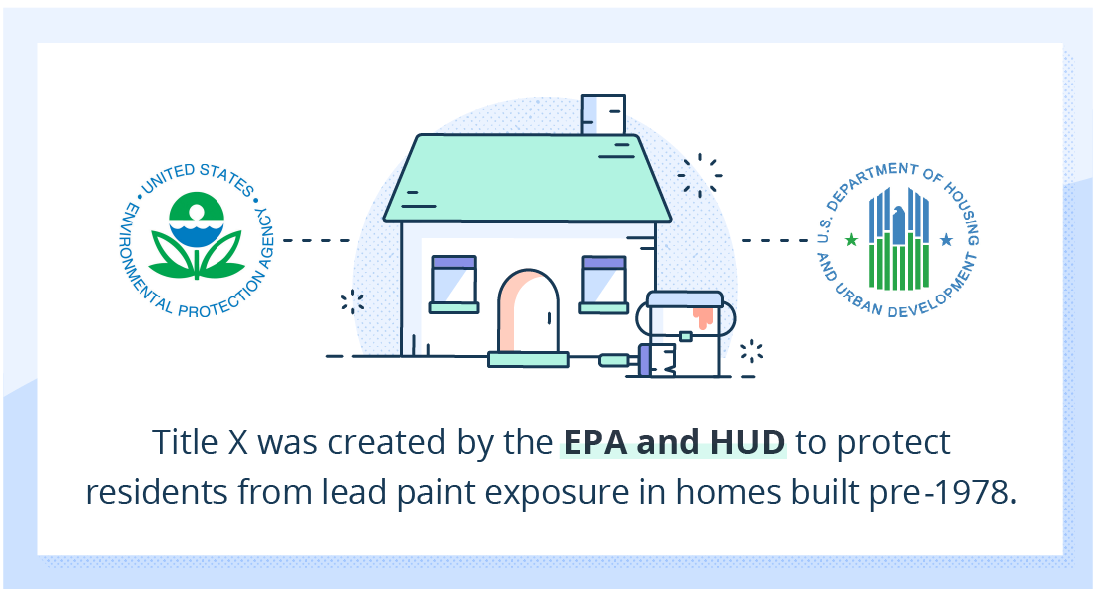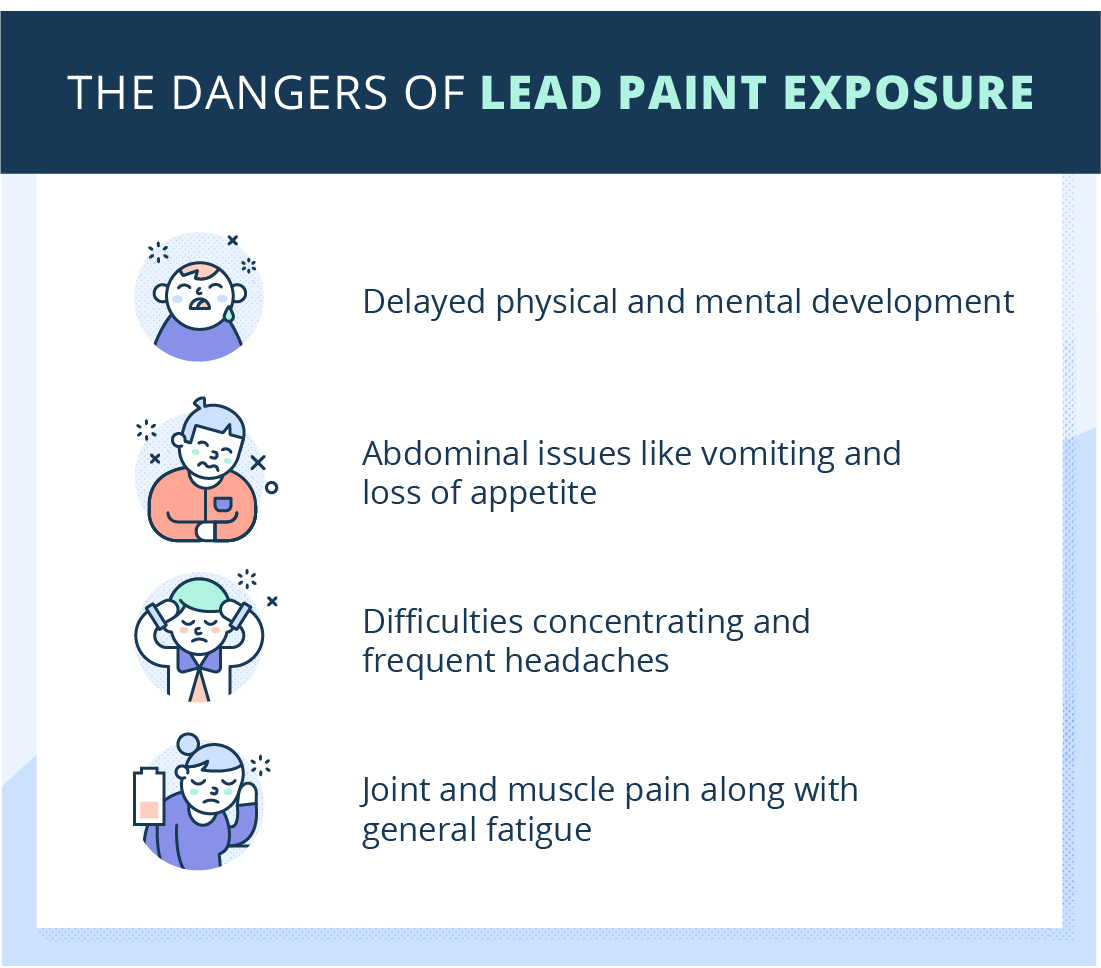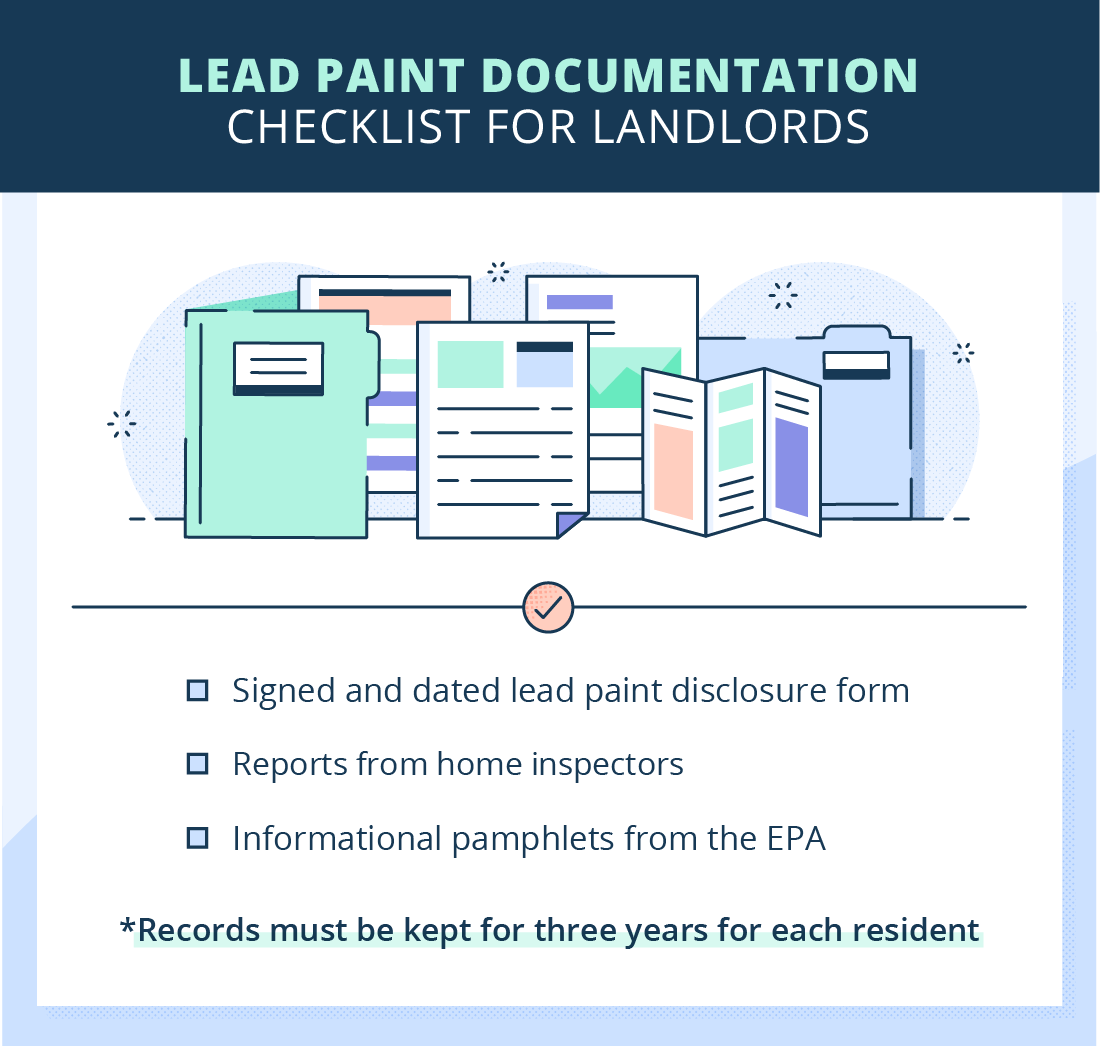8 min read
Blame Landlords Less and Property Managers More
Scroll through the news, and you’ll find no shortage of horror stories about landlords. But in three recent cases involving unlawfully withheld...

In this article, you’ll find…
Since the introduction of the Residential Lead-Based Paint Hazard Act (Title X), in 1992, there are very specific federal laws landlords must follow when it comes to lead-based paint disclosure. A partnership between the Department of Housing and Urban Development (HUD) and the Environmental Protection Agency (EPA) created safety guidelines for homes built before 1978 in order to protect residents from the dangers of lead-based paint that was commonly used in home construction throughout the 20th century.

Learn more about the required lead-based paint disclosure stipulations below, or jump to the free lead-based paint disclosure form.
The lead-based paint disclosure is a legal requirement for landlords, as it helps protect residents from the dangers of lead paint and landlords from legal repercussions. Though it might seem old-fashioned to be concerned with lead paint, the truth is that the use of lead paint wasn’t completely banned until 1978, meaning that many homes today still contain lead paint dust and residue. Exposure to lead paint is particularly dangerous for children, and lead poisoning can produce dangerous health issues such as headaches and memory loss.

Fortunately, cases of lead poisoning from paint dust are rare these days, as most lead-based paint has been removed or covered for years. The lead-based paint disclosure serves as a precautionary measure to let residents know that there may still be a small risk.
Landlords and tenants should know that there are residences that may be exempt from the lead-based paint disclosure, including:
Both landlords and tenants should take note of the required documentation below so both sides can be confident that everything is in order before signing the lease agreement.

First things first, for any properties that don’t meet the exemptions above, landlords must attach the lead-based paint disclosure form as part of the lease documents. The form should lay out any lead-based paint hazards that the landlord knows exists in the unit, such as underneath coats of paint in the bedroom or on the building siding. It should also state that both parties understand the dangers of lead paint exposure and both agree to the living conditions. You can use our lead-based paint disclosure form PDF below.
In addition to the known hazards in the disclosure form, landlords should also provide any records they may have from registered property inspectors. This information can help potential residents make a more informed decision and also shows that the landlord has done their due diligence in making sure the property is habitable. In the case that a property inspector has cleared the home of any lead-based paint dangers, then landlords will not need to provide the disclosure form or other documentation, only the cleared reports from the property inspector.
Landlords are also required to provide potential tenants with informational materials from the HUD and EPA about the dangers of lead paint. Though this may seem like a lot of hassle, this is all to make sure landlords are legally covered and tenants maintain safe behavior to reduce their risk when living in a home that has lead paint. Here is an English pamphlet and a Spanish pamphlet you can print out and attach to the lease with the other materials. It includes recommendations for tenants about how to reduce ingesting lead particles with proper cleanliness and home repairs.
If you have a long-term resident, you are required to keep records of the signed lead-based paint disclosure form and home inspection findings for three years. Landlords and tenants should note that landlords are not required to provide new lead-based paint disclosures for each year that the tenant renews unless additional lead hazards have been uncovered during that time. In most cases, a single disclosure during the initial lease signing is enough.
Landlords face hefty fines if even one of the above requirements is not met. The EPA has fined individuals and businesses up to $50,000 for not providing the proper lead-based paint disclosure documents, with many fines starting at $10,000 per violation. Avoid fines and legal action and ensure your tenants are safe and healthy by following all Title X regulations. Trying to skip out on this process is dangerous and simply not worth the effort.
Tenants, prior to signing a lease, it’s important to be in the know regarding all things lead-based paint. Before you put pen to paper, your landlord should have provided you with:
If you have concerns about lead-based paint in the property, you have the right to ask your future landlord to get a lead hazard inspection from a certified inspector before signing the lease. Like they say, it’s always better to be safe than sorry.
In order to make complying with Title X as easy as possible, we’ve created a printable PDF lead-based paint disclosure form below that you can add as an attachment to your own lease agreements.
Protect yourself and your tenants by making sure you are following all federal, state, and local landlord-tenant laws. Take a look at your specific state for additional links and information.
Download our essential landlord forms pack for just $199 in your TurboTenant account. From welcome letters to property inspection forms, we have you covered.
Download our essential landlord forms pack for just $199 in your TurboTenant account. From welcome letters to property inspection forms, we have you covered.
The Lead Disclosure Rule is another name for the Residential Lead-Based Paint Hazard Reduction Act of 1992 (Title X), which established protection for residents from the dangers of lead-based paint that was commonly used in home construction up to 1978.
If a lead-based paint disclosure has been included in the lease agreement, this means that the property was built prior to 1978, and landlords of such homes are required to provide all tenants with this disclosure form if a property inspection found evidence of lead-based paint in the home.
Both the landlord and tenant must sign and date the disclosure form.
Plain and simple, yes. When landlords have knowledge of lead-based paint in their rental but do not disclose it and this negligence results in harm to a tenant or a tenant’s child, the tenant can sue the landlord for their damages, such as medical costs resulting from lead poisoning.
Common symptoms of lead poisoning include delayed physical and mental development in children, abdominal issues like loss of appetite and vomiting, difficulties concentrating and frequent headaches, and lastly, joint and muscle pain.
There are four means of controlling or removing lead-based paint safely. These options include:
Disclaimer: TurboTenant, Inc. does not provide legal advice. This material has been prepared for informational purposes only. All users are advised to check all applicable local, state, and federal laws and consult legal counsel should questions arise.
This post was updated June 2021.
8 min read
Scroll through the news, and you’ll find no shortage of horror stories about landlords. But in three recent cases involving unlawfully withheld...
9 min read
Like it or not, credit dictates a lot in our lives, and your tenants may want to get some recognition for their on-time...
14 min read
Staying compliant with IRS rules for rental property is a non-negotiable piece of the landlord puzzle. As we all know, Uncle Sam expects full transparency from...
Join the 750,000+ independent landlords who rely on TurboTenant to create welcoming rental experiences.
No tricks or trials to worry about. So what’s the harm? Try it today!
TurboTenant, Inc., © 2025
Created in Sunny Colorado